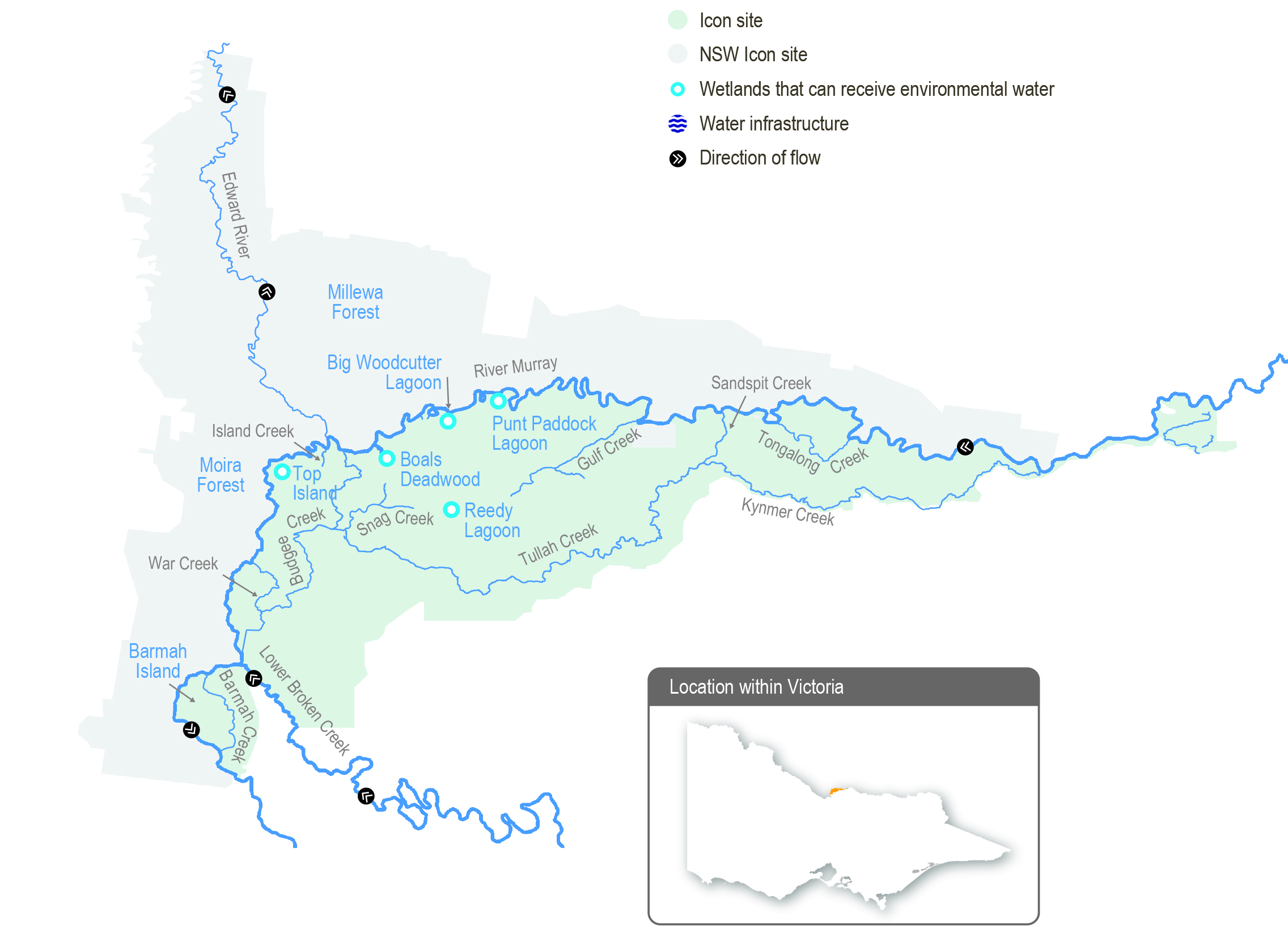The wetlands throughout the forest provide a constant source of nutritional foods and significant fibers for the Yorta Yorta People. Resources in the landscape were also used to manufacture canoes, shields, and carrying devices.
Flooding in the Barmah-Millewa Forest depends on the flow in the Murray River. A natural narrowing of the river (commonly referred to as the Barmah Choke) restricts the flow and causes overbank flooding when the flow below Yarrawonga Weir exceeds the channel’s capacity. This restriction influences both the operation of Yarrawonga Weir and the magnitude of environmental flows that can be delivered to the forests. The Yorta Yorta People see this narrow part of Dhungulla (Murray River) as a culturally significant creation story, and it provides ecosystem services both from a culturally and environmentally significant viewpoint. The name ‘Barmah Choke’ is culturally inappropriate for the Yorta Yorta, and it is seen as a negative way to view their traditional lands and waters. Yorta Yorta People refer to this as the ‘Pama Narrows’, or more simply ‘The Narrows’.
Before the river was regulated, Barmah-Millewa Forest was regularly flooded with high flows from rainfall and snowmelt in winter and spring. These regular floods shaped a rich, productive forest environment. The construction and operation of Hume Dam and Dartmouth Dam have greatly reduced the size and frequency of natural winter/spring floods in Barmah-Millewa Forest.
Operational deliveries that supply water to users downstream of The Narrows can cause unseasonal, low-level floods, which can damage the forest and banks of the river, depending on the timing and volume of the flow. Country for the Yorta Yorta People continues to change, but the changes have been rapid post-settlement due to the installation of infrastructure and river regulation. This has changed Country culturally and environmentally for the Yorta Yorta People.
The delivery of irrigation water during summer/autumn is now managed to minimise the unseasonal flooding of the forest. Regulators along the banks of the Murray River that control flow between the river and the forest remain closed during summer and autumn to restrict flow through low-lying flood runners to simulate natural conditions. The delivery of water to Barmah-Millewa Forest is also limited by a flow constraint below Yarrawonga Weir that aims to minimise impacts to adjacent farming operations in NSW. The current constraint limits the regulated flow to a maximum river level of 3.3 m at the Tocumwal gauge (about 18,000 ML per day downstream of Yarrawonga Weir), subject to various conditions. A regulated flow up to a river level of 3.0 m on the Tocumwal gauge (about 15,000 ML per day downstream of Yarrawonga Weir) can be delivered at any time during the year and is not subject to conditions. To overcome this constraint, most environmental flows are shared between Barmah and Millewa forests to deliver water to low-lying wetlands in each forest at least every second year. It is currently not possible to achieve the desired flood depth and duration for floodplain marsh vegetation in both forests at the same time without larger natural flooding.
Water management at Barmah-Millewa Forest seeks to build on natural flow and the delivery of consumptive and operational water en route to optimise environmental outcomes when possible. As Barmah-Millewa Forest is located towards the upper reaches of the regulated portion of the Murray River, water for the environment that passes through the forest and returns to the river can often be used at sites further downstream as part of multi-site watering events.
